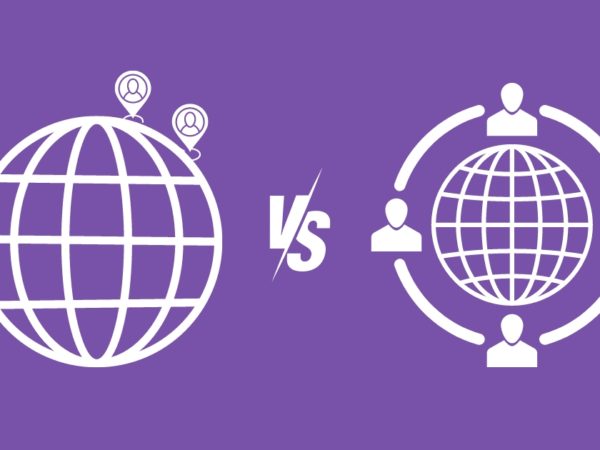Controlling, managing, measuring, and governing business processes is crucial to encourage continuous improvement and avoid financial risks.
And organizations use internal controls, which are methods organizations use to ensure security against fraudulent activities while ensuring the processes run smoothly. However, when these internal controls fail execution, they can threaten businesses.
According to a report, 43% of small organizations experience fraud due to the lack of internal controls, and 20% of large organizations experience fraud because of overriding existing internal controls.
This is when the Committee of Sponsoring Organizations (COSO) of the Trendway Organizations developed a framework to help companies control and manage their business processes. This framework allows organizations to ensure that their business processes are aligned and guide them in risk identification and mitigation.
While implementing the COSO framework isn’t mandatory, it helps organizations comply with regulatory standards and prevent fraudulent activities, which otherwise get challenging to avoid, failure which can make organizations go through nightmares.
So, if you want to prevent such nightmares, keep reading. This blog discusses the COSO framework, its benefits, and how organizations can use it to mitigate risks.
What is the COSO Framework?
<img alt="YouTube video" data-pin-nopin="true" data-src="https://kirelos.com/wp-content/uploads/2023/03/echo/maxresdefault.jpg6422fef178a8e.jpg" height="720" nopin="nopin" src="data:image/svg xml,” width=”1280″>
The COSO framework is a set of guidelines and principles that assist organizations in controlling and managing their business processes.
The COSO committee created this framework in 1992, which was led by the General Counsel and Executive Vice President, James Treadway, Jr., with other private sector organizations, including:
- Financial Executives International (FEI)
- American Accounting Association (AAA)
- American Institute of Certified Public Accountants (AICPA)
- The Institute of Internal Auditors (IIA)
- The Institute of Management Accountants (IMA), formerly known as the National Association of Cost Accountants
The committee updated and made a more modern version of the framework in 2013, represented by the COSO cube, as shown below.
This three-dimensional diagram shows how the different internal control system elements work together to align business processes.
In 2017, the COSO committee unveiled a companion framework to the COSO framework to make it easier for organizations to assess and prioritize risks, molding business performance and risk strategies together.
Thus, understanding the COSO framework provides significant benefits to the organization, guiding them in managing and efficiently establishing internal controls throughout the business environment. Reliable internal control processes assure ethical, transparent, and aligned business operations with industry standards.
Benefits of the COSO Framework
Setting a risk mitigation strategy that adapts to the changing cybersecurity landscape and new challenges is crucial for every business.
Here’s how implementing the COSO framework can help businesses stay ahead of malicious fraud and protect their business processes and reputation.
#1. Improved Risk Assessment
Inefficient management control is one of the primary reasons behind most workplace incidents. And these incidents and risks emerging in one area can significantly affect other business areas, affecting the entire business performance.
Proactively implementing the COSO framework and effective risk assessments can help identify, manage, and prevent risks from occurring and affecting your business.
#2. Improved Internal Controls
The COSO framework provides companies with more effective internal controls for risk mitigation, allows the business processes to operate more uniformly as per the set internal controls, and leverages necessary data for sound decision-making.
#3. Improved Fraud Detection
The COSO framework improves the effectiveness of fraud detection and risk management, whether hackers, cybercriminals, trusted employees, or customers penetrate the fraudulent activity.
The framework makes it easier for organizations to easily prevent fraudulent activities from occurring by setting internal controls to detect the fraud and respond to those incidents as soon as they occur to mitigate them before they do any damage.
#4. Better Governance
Oversight of business performance and poor governance lead to many business failures and loss of revenue. Therefore, the COSO framework’s fundamental goal is to enhance companies’ corporate governance function that continuously monitors risk to ensure adherence to policies, laws, and goals.
#5. Enhanced Application Security
Besides fraud and cybersecurity risks, organizations face continuous security attack threats to business applications. The COSO framework offers guidelines for companies and organizations to assess and enhance their application control environment for better cybersecurity detection and prevention.
#6. Improved Flexibility
You can easily adapt the COSO framework to your organization’s needs and requirements, regardless of sector or size. This makes it ideal and efficient for a wide range of business processes.
#7. Stable Performance
The COSO framework makes it easier to anticipate risks and stay ahead of schedule, limiting performance variability. As a result, it helps organizations maximize profitability and minimize disruptions, thus improving business resilience.
#8. Cost-Efficient
Correctly implementing the COSO framework allows organizations to streamline business processes, establish and implement efficient internal controls, better mitigate risks, and manage compliance costs.
Use of the COSO Framework
Organizations primarily use the COSO framework to design, develop, and implement effective internal controls and enhance their overall effectiveness.
The COSO framework provides organizations guidance to detect and mitigate risks, set clear controls and objectives, and make effective decisions, allowing organizations to adhere to ethical and legal requirements focusing on risk management and assessment.
This framework is heavily utilized by accounting and financial firms and publicly traded organizations.
The COSO framework has real use and business applications, including:
#1. Expanding Operations
Suppose your organization plans to expand its operations to new cities or countries and needs to ensure that you’ve considered and mitigated all the possible risks that could threaten your business processes. In that case, the COSO framework helps you do that.
The COSO framework provides a systematic way to identify, manage, and assess risks and develop mitigation strategies for the same.
#2. Shift in the Strategy
Suppose your organization plans to implement significant changes in the business processes and operations, like a new product or service launch or a shift in business strategies. In that case, using the COSO framework can help your business.
It can help you plan and effectively manage significant business changes, providing a way to find potential risks associated with the changes and design plans to address them.
#3. Stay Ahead of the Competition
Finding ways to stay ahead of the competition if you’re facing challenges from your rivals or notice business losses is essential to boost your competitiveness. One way to do this is by understanding your customer’s preferences and requirements.
The COSO framework helps organizations accomplish and fight against this challenge, offering a structured approach to market research and customer analysis.
Five Crucial Components of the COSO Framework
The five components of the COSO framework as also known as the internal control components and are often referred to as ‘CRIME,’ which is short for
- Control environment
- Risk assessment
- Information and communication
- Monitoring activities
- Existing control activities
Let’s look at each of these components in more detail.
Control Environment
The control environment is the foundation of all the internal control systems, which is the set of processes, standards, and structures that ensure an effective internal control system across the organization.
It consists of parameters like the organizational structure, the ethical value of management, and the delegated authority.
A robust control environment instills discipline within the organization, ensures the organization’s adherence to regulatory compliance policies and requirements, and minimizes the chances of employees engaging in fraudulent activities.
Thus, with fraud becoming more common in this age and corporate world, the control environment is one of the COSO framework’s most significant and critical components.
Risk Assessment and Management
Risk assessment and management, sometimes called enterprise risk management, includes processes that help identify and assess risks that could harm a business’s well-being and affect its core objectives.
Risks can either be internal or external. While internal risks include embezzlement and fraud, external risks can be due to changes in market conditions or natural disasters.
Information and Communication
Information and communication systems are crucial for an organization to run efficiently, ensuring that external and internal communications adhere to ethical values, legal requirements, and standard industry practices.
These systems ensure that relevant information is always available to those in need and that their communication follows the best practices to achieve business goals and objectives.
Communication is a continual process of iterating, obtaining, sharing, and providing information in a timely manner from internal and external sources across the organization, enabling the senior management to communicate the importance of internal controls effectively.
Monitoring Activities
It’s crucial to regularly monitor all the internal controls and ongoing and separate evaluations to ensure and verify that they function correctly. In addition, monitoring activities help assess whether the internal control systems function as designed, enabling organizations to take corrective actions whenever necessary.
Monitoring internal controls allows organizations to identify risks, issues, and weaknesses within the systems continuously so they can be corrected promptly.
Existing Control Activities
Control activities are detective and preventative processes, policies, and procedures that help mitigate risks across an organization and ensure they’re appropriately controlled.
They’re present at all levels of the organization with the primary aim of ensuring that the business processes are carried out in a way that allows an organization to meet its goals without introducing unnecessary risks within the processes.
Examples of control activities include physical controls like security cameras, segregation of duties, and authorization requirements.
How to Implement the COSO Framework?
Here are the steps for implementing the COSO framework to develop effective internal control systems and improve their management and maintenance.
#1. Understanding the COSO framework
Organizations willing to apply the COSO framework must designate a dedicated team to understand its design and make them responsible for its implementation.
The team must comprehend the framework’s benefits, use, applications, and principles for an effective internal control system.
#2. Developing a Plan
After the framework’s proper understanding, the team must develop a project plan or a roadmap to address the framework scope of implementation, stakeholders, resources, organizational structure, and timelines.
#3. Assessing a Framework’s Implementation
The COSO framework implementation varies from company to company, and assessing the internal control systems will help organizations identify risks they must address and mitigate.
The implementation team must define clear business objectives, investigate and analyze the current system of internal controls, and identify the gaps by involving entry-level employees and senior management to gather multiple perspectives to develop robust internal control systems.
#4. Remediating the Solutions
Whatever weaknesses and vulnerabilities you identify during the assessment must be addressed in this step. In addition, developing internal controls and remediation solutions to address these weaknesses is critical.
You can start with remediating solutions for the risks with the highest likelihood and causing the most harm with significant impacts using the best vulnerability management software and then work your way down.
#5. Testing, Reporting, and Optimizing the Solutions
Organizations must design the solutions in detail and perform verifications to test and report on their efficiency and effectiveness.
The responsible stakeholders must stay informed about the test results to provide feedback and replacement suggestions on the solutions with gaps and controls deemed ineffective.
This is a continuous and repetitive process where ongoing evaluations enable early warning signals to take immediate action on the changes in the control environment.
Limitations of the COSO Framework
While the COSO framework provides multiple benefits to organizations, it also comes with its own challenges and limitations, such as:
- Difficulty in implementation: One of the biggest challenges of the COSO framework is that it’s difficult to implement, especially for organizations that have not worked with it before. The COSO framework requires dedicated commitment from employees and senior management to succeed.
- Difficult to use: The COSO framework is not easy to use and understand, as it comprises several technical jargon and can get difficult to interpret in most cases, especially for those unfamiliar with the latest business technologies and terminologies.
- Time-consuming: The COSO framework can be time-consuming to understand and implement, especially in larger organizations and businesses, as it needs a lot of planning and coordination between multiple teams and departments.
Final Words
The COSO framework is a comprehensive risk management and mitigation framework that provides organizations and businesses guidance on enhancing their internal control systems.
It’s based on its five correlated and crucial components that work together to achieve organizational objectives, help detect and avoid fraud, protect assets, and ensure compliance with laws and regulatory requirements.
So, if you’re planning on creating a system of internal controls or looking for ways to improve your existing one, opting for and implementing an effective COSO framework is the right choice.
Next, check out a comprehensive guide on data quality.



